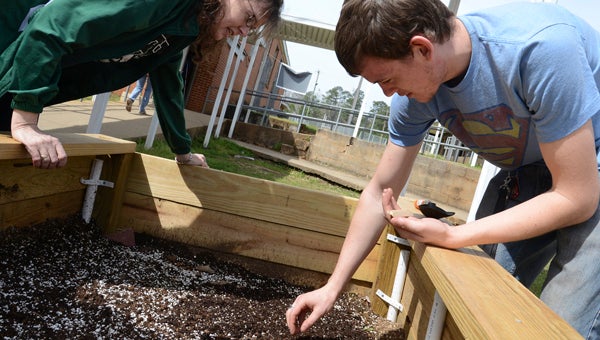More schools should make efforts to expand learning into real world environments
Published 9:49 pm Tuesday, March 25, 2014

Dallas County High School environmental science teacher Catherine Johnson, left, looks on as junior Josh Broadhead plants a row of sunflower seeds in a raised garden at the school Friday morning. (Jay Sowers | Times-Journal)
Let’s be honest, most students don’t wake up everyday, thinking about how excited they are to drive or take the bus to school.
At many schools, students spend several hours in classrooms, with only a brief respite for lunch and perhaps gym class.
Eventually it becomes habit — memorize a set of facts, spew it onto a piece of paper during test time and forget it forever after finishing the semester. It’s obviously not the ideal learning environment, but in many schools, it’s the case.
At Dallas County High School, perhaps that’s slightly different, as students in Catherine Johnson’s environmental science class tend an outdoor garden.
Johnson received two $500 grants from the Valley Grande City Council to start the project and went to work creating a garden. Now, almost two semesters after the project started Johnson said students are excited to show off their green thumb whenever possible. Some students from the project’s first semester have even come back to check the progress of their plants.
The project is relatively small in scope, but is making an important impact on learning. Books may contain information needed to pass tests and, in turn, a class, but by physically being able to touch the very objects described in a book, students retain more information.
Getting a passing grade on a test is great, but what use is that knowledge if students forget everything they worked so hard to memorize when trying to study for the next test.
If students are coming back to check on the progress of their old project, Valley Grande clearly made a positive choice with their mini-grants.
It’s encouraging to see schools working to take learning out of the classroom and for city government to make concious efforts to improve learning.





